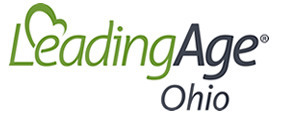Complete Story
01/08/2016
Miller Trusts: Who will be affected?
Miller Trusts: Who will be affected?
Early last year LeadingAge Ohio notified members of a proposed change to the Ohio Department of Medicaid’s disability determination system. Effective July 1, 2016, the Ohio Department of Medicaid is preparing to change its disability determination system so that individuals who qualify for Supplemental Security Income (SSI) will automatically qualify for Medicaid. In legal terms, this means the state is implementing section 1634 of the Social Security Act, rather than using section 209(b).
What does this mean?
- Individuals will no longer have to file separately for SSI and Medicaid eligibility.
- However, individuals with incomes above eligibility thresholds will no longer be able to to use medical bills to “spend down” to achieve Medicaid eligibility.
- Individuals in institutions or using waivers will need to establish a qualified income trust (QIT), also known as a Miller Trust, in lieu of a spend-down process.
- Income in excess of the eligibility threshold must be deposited into the trust and the trust then pays for patient liability, personal allowance, spousal needs allowance (if any), health insurance premiums (if any) and any other allowable exclusions from income. Resident may choose to put all of the monthly income into the trust.
- A Miller Trust is a legal document. ODM is contracting with Automated Health Systems to assist individuals in institutions and on waivers to establish the trust.
Who is affected?
ODM has released preliminary data that will be refined as the effective date draws near. Some of the data are as follows:
- ODM data show that 4,670 people who reside in institutions (both fee-for-service and MyCare facilities) will be affected
- Over eight hundred (800) people are on waiver (ODM waivers, ODA waivers and PACE, DODD waivers and MyCare waivers) and will be affected
- On the community side, of the 25,200 people using waivers, about 12,000 will lose Medicaid and be expected to get medical care through the exchange.
How can you help?
LeadingAge Ohio has been active in a coalition of advocacy organizations seeking to understand the ramifications of this change. In particular, now we need to understand the impact of this change on our LeadingAge Ohio members. For some, this may represent a potential for lack of payment. Please respond to the following questions:
- First, what number of residents in your nursing facilities have income in excess of $2,199?
- Of the population that has income in excess of $2,199, how many residents do not have a guardian or power of attorney?
- Of the number of residents that do not have a surrogate, how many are not competent to understand and sign a trust document?
- On average how long are you waiting on eligibility determinations from the County?
Please respond to Nisha Hammel at nhammel@leadingageohio.org or Kathryn Brod at kbrod@leadingageohio.org.
For more information, please refer to a Jon Honeck, a coalition member’s blog on this topic.
